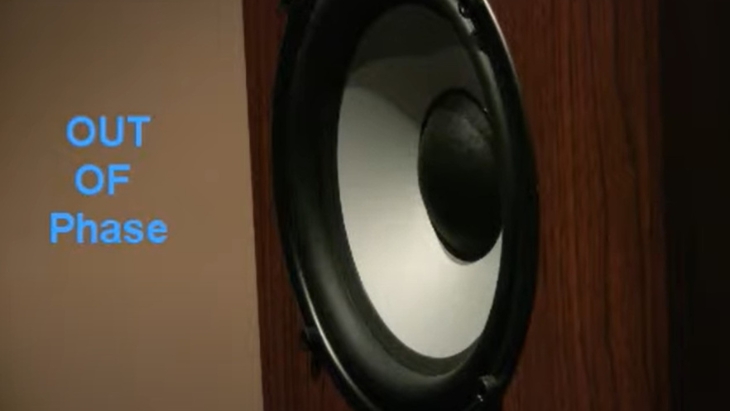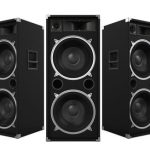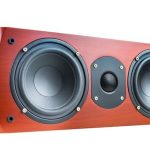When it comes to setting up a home audio system, one of the most important factors is getting your speakers in phase. In other words, each speaker produces sound waves that travel in the same direction for clear and natural audio. Out-of-phase speakers send their individual waves traveling in opposite directions.
It results in distortion and low-quality sound, like when you’re trying to follow what someone says over background noise from a party or movie theater. In this article, we will discuss how to tell if speakers are out of phase and ways you can fix it so your music flows seamlessly!
What is Speaker Phase?
When it comes to finding out whether your speakers are in or out of sync, it’s crucial to understand the concept of the speaker phase. In short, this refers to how sound waves produced by each speaker interact with one another. When all is running smoothly and both speakers align perfectly – then they’re said to be “in phase”. You’ll notice a clear and crisp sound coming from the set-up – like you’ve stepped into a studio!
On the other hand, when things go awry and you detect distortion instead of harmony between them, which means they’re “out of phase”. The misalignment will lead to an unpleasant muddy noise.
How to Tell If Speakers are Out of Phase
Now that we understand what the speaker phase is, let’s tackle the question of how to tell if your speakers are out of balance. There are a few handy tricks you can use to figure it out. They include:
Method 1: Listening Test
If you want to check if your speakers are in or out of phase, the best way is to put them through a listening test. Play a track with an obvious stereo image and listen carefully — if it sounds like it all originates from one spot in space, then congrats! Your speakers are perfectly synced up. Otherwise, if the sound feels spread apart or like it’s coming at you from different directions, you’ve got yourself some out-of-phase speakers.
You can also try playing mono tracks – where both channels contain the exact same information. This is a more straightforward way of testing for phase alignment issues. If everything sounds identical when swapping back and forth between left/right channels, there’s no need to worry about misaligned phases. However, any difference means that something went wrong somewhere along the line and needs correcting.
Method 2: Polarity Test
Another way to check the phase of your speakers is by running a polarity test. This test involves playing a tone that switches between positive and negative polarities at regular intervals. When the sound emitted is crystal clear, you know the signal is in-phase. However, when it appears distorted and “muddy”, then you can assume they’re out of sync with each other.
To perform this easily yourself, all you need is to set your audio source to around 1kHz frequency. Then play the tone and listen for clarity if it sounds crystal clear, then congratulations! Your speakers are in perfect harmony with one another. But if not? You may have some work ahead before they hit those sweet notes just right!
Method 3: Visual Test
When you want to test the phase of your speakers, a visual inspection is one method to consider. Start by removing their grilles so that you can take a look at their drivers (those cone-shaped components responsible for producing sound).
Make sure they’re moving in the same direction – if they are, congrats! Your speakers are in sync and ready to rock ‘n’ roll with clarity and precision. But if these cones are pointing opposite ways instead, then it looks like your speakers are out of phase.
How to Fix Out-of-Phase Speakers
If you’ve noticed that your speakers seem out of sync, don’t freak out. It’s a pretty common issue that can be taken care of without much fuss. Here are some easy ways to get them back in phase:
Method 1: Switch the Speaker Wires
If you’ve ever heard a sound that’s out of phase, chances are it was caused by incorrect wiring. When the positive terminal of one speaker is connected to the negative terminal of another, their waves move in opposite directions resulting in an audio conflict.
To rectify this issue, simply unplug your speakers and switch up their connections so each positive wire goes to its respective amplifier output – and vice versa for negatives. With just a few small changes, you’ll be able to restore harmony between both speakers and ensure optimal audio performance every time.
Method 2: Use a Phase Tester
Another way to tackle the problem of out-of-phase speakers is by using a phase tester. This device can help you check if your audio system‘s speaker phases are aligned correctly, and make adjustments accordingly. To use it, just hook up the phase tester according to its instructions. Let this handy tool do the work for you so you don’t have to worry about any technicalities – now that’s what we call hassle-free!
Method 3: Adjust the Speaker Placement
When it comes to speakers, there’s a chance they could be out of phase. If you accidentally place them too close together, the sound waves emitted can get in each other’s way and create an imbalanced listening experience – something nobody wants! To fix this issue, try stepping back and widening the distance between your speakers or tilt their angles for improved alignment. Additionally, don’t forget to check their settings as well. Sometimes, all it needs is a little tweak here and there to get those tunes bumping right again!
Method 4: Use a DSP Processor
If none of the above strategies are working out, you can take a second shot at correcting your speaker’s phase with the help of digital signal processing (DSP). This processor provides you with an opportunity to make adjustments in both phase and timing when it comes to audio signals, making sure any phase issues get taken care of.
Final Thoughts on How to Tell If Speakers Are Out of Phase
In conclusion, having speakers out of phase can be extremely disappointing- it leads to an unpleasant and muddy sound that lacks clarity and definition. But the great news is, this issue isn’t something you need to worry about for too long; with the steps outlined in this article, determining if your audio setup needs some tweaks is easier than ever.
It’s important to get your speakers into phase as doing so ensures maximum sonic enjoyment! So don’t skimp on making sure all components are properly aligned – it could make or break your listening experience.
Michael Evanchuk is a San Francisco-based sound engineer with 20 years’ experience installing, troubleshooting, and repairing commercial, automotive, and household sound equipment. Evanchuk owns an auto stereo center, where he offers highly competitive car audio installation and repair services. He has written dozens of articles on different sound engineering topics, all of which have been published in leading journals, blogs, and websites.





